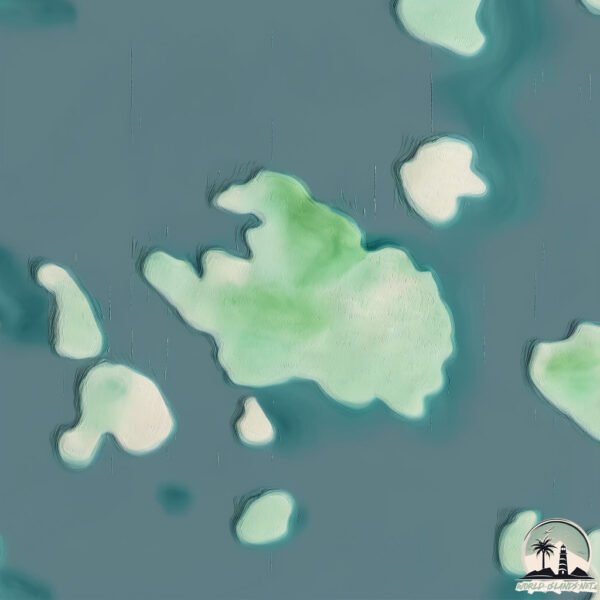Welcome to Nisída Drakonéra , a Temperate island in the Ionian Sea, part of the majestic Atlantic Ocean. This guide offers a comprehensive overview of what makes Nisída Drakonéra unique – from its geography and climate to its population, infrastructure, and beyond. Dive into the details:
Geography and size of Nisída Drakonéra
Size: 2.558 km²Coastline: 8.6 kmOcean: Atlantic OceanSea: Ionian SeaContinent: Europe
Nisída Drakonéra is a Small Island spanning 2.6 km² with a coastline of 8.6 km.
Archipel: –
Tectonic Plate: Africa – One of the world’s largest tectonic plates, covering the African continent and parts of the surrounding oceans, known for its stability with some active rift zones.
The geographic heart of the island is pinpointed at these coordinates:
Climate and weather of Nisída Drakonéra
Climate Zone: TemperateClimate Details: Hot-Summer Mediterranean ClimateTemperature: Hot Summer
Climate Characteristics: Characterized by hot, dry summers and mild, wet winters, typical of coastal areas with abundant sunshine.
Topography and nature of Nisída Drakonéra
Timezone: UTC+02:00Timezone places: Europe/MariehamnMax. Elevation: 83 m Mean Elevation: 42 mVegetation: Evergreen Needleleaf ForestTree Coverage: 54%
The mean elevation is 42 m. The highest elevation on the island reaches approximately 83 meters above sea level. The island is characterized by Plains: Flat, low-lying lands characterized by a maximum elevation of up to 200 meters. On islands, plains are typically coastal lowlands or central flat areas.
Dominating Vegetation: Evergreen Needleleaf Forest
Vegetation: 3 vegetation zones – Moderately Diverse Island
Infrastructure and Travelling to Nisída Drakonéra
Does the island have a public airport? no .
Does the island have a major port? no .
The mean population of Nisída Drakonéra is 44 per km². Nisída Drakonéra is Gently Populated. The island belongs to Greece .
Continuing your journey, Nisí Kálamos is the next notable island, situated merely km away.
Drakonera Islands Greece Tour | Platygiali-Drakoneras-Astakos | ΔΡΑΚΟΝΕΡΑ MSFS VL3
Today we are visiting the Drakoneras, Echinades islands of the Ionian Sea, Greece. Our virtual scenic flight departs Limenas ...
Drakonera Islands Greece Tour | Platygiali-Drakoneras-Astakos | ΔΡΑΚΟΝΕΡΑ MSFS VL3
Today we are visiting the Drakoneras, Echinades islands of the Ionian ...
Today we are visiting the Drakoneras, Echinades islands of the Ionian Sea, Greece. Our virtual scenic flight departs Limenas ...
00094 Δρακονέρα Εχινάδων 9 2020
Βίντεο Αφιέρωμα! Διαδρομή από Σάμη Αστακό με το Φερυ ΙΟΝΙΟΝ ΠΈΛΑΓΟΣ. ...
Βίντεο Αφιέρωμα! Διαδρομή από Σάμη Αστακό με το Φερυ ΙΟΝΙΟΝ ΠΈΛΑΓΟΣ. Με τα όμορφα Νησάκια και το μπλέ γαλάζιο τής ...
Greece is classified as Developed region: nonG7: Developed economies outside of the Group of Seven, characterized by high income and advanced economic structures. The level of income is High income: OECD.
News – Latest Updates and Headlines from Nisída Drakonéra
Stay informed with the most recent news and important headlines from Nisída Drakonéra. Here’s a roundup of the latest developments.
Loading...
Please note: The data used here has been primarily extracted from satellite readings. Deviations from exact values may occur, particularly regarding the height of elevations and population density. Land area and coastline measurements refer to average values at mean high tide.

